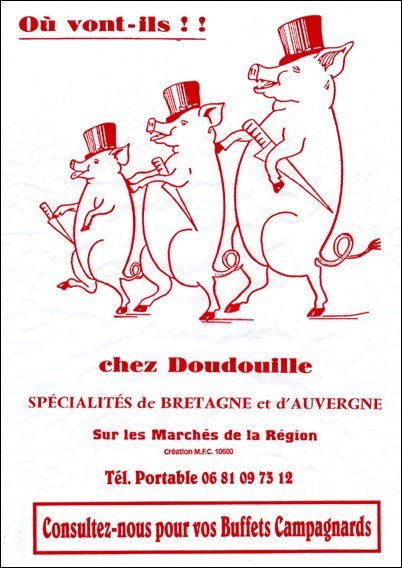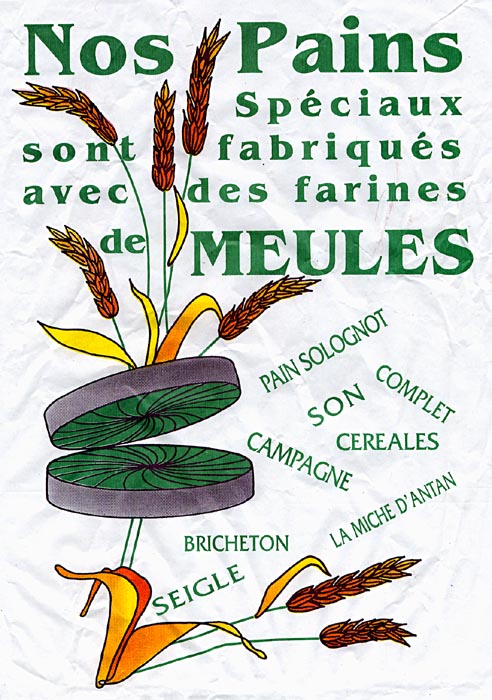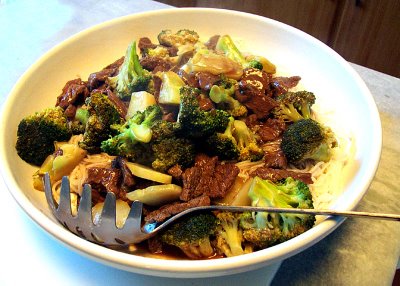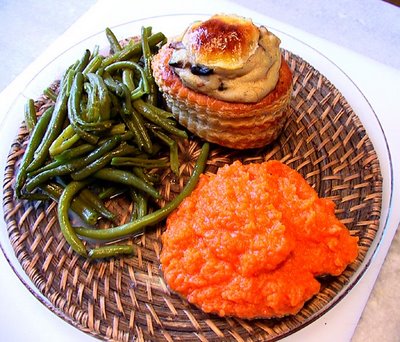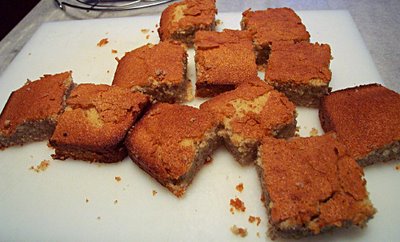The neighborhood party was this past Saturday night. Here's
the first installment.
Joining us for the evening with the three J's were the G's, who live next door to them. They had
invited us all for drinks at their house a couple of weeks ago, if you remember.
The G's are nice people we've known since we moved into the neighborhood (the hamlet) more than three years ago, and we see them off and on but not very frequently. Mr and Mme G are both about 60 years old and have children and grand-children who don't live here. It seems funny to call them Mr and Mme G, because we know them by their first names, and we say
tu them, not
vous.
Our house, one of the newer ones in the hamlet
Vous and
tu always comes up at these events, one way or another. I say
vousto all these people, with the exception of the G's. But first names are used liberally. Mme J, at age 84, seems to enjoy being called Madame, which is pretty formal in this kind of situation. She is very
vieille France — "old-school" — people tell me.
Another guest, P, who I will describe later, kept saying
tu when she was talking to Mme J, and then correcting herself with a great flourish and considerable to-do. She called Mme J by her first name, but when she said
tu to her "by accident" she would apologize and then repeat her sentence using
vous. I thought it was a little over the top.
At one point, late in the evening, P did her "
tu-oops-I-mean-
vous" trick one more time and it caused some confusion. Mme J lost track of the subject or didn't understand P's question, and it showed. The youngest J told her grandmother that P didn't know whether to say
tu or
vous to her.
"Would you mind if P said
tu to you instead of
vous, Mamy?" youngest-J asked.
Mais pas du tout, Mme J said — not at all. But she didn't say it very loudly; it was almost an aside. I heard it. It seemed clear to me that Mme J would be fine with the
tu from P.
Well, P didn't pick up on it at all. She was adamant that
vous was the proper form. "It's a question of age and respect," she told me. "I would never permit myself to say
tu to [Mme J]," she said, using Mme J's first name. "I owe her the respect of the
vous because of her age."
Maybe P wanted to be begged to say
tu, but I don't think Mme J is the kind of person who would do that. She seems to be a reserved, dignified person, and not especially warm. As I said, I think she enjoys having people her daughter's age, like me and P, call her
vous and, in my case, since I don't know her at all, Madame.
You understand that the tu/vous interactions are one of the things that interest me most about these get-togethers with our French neighbors. Another thing that interests me, of course, is learning more about the history of La Renaudière and our village. A third one is the hear what people have to say about the upcoming French presidential elections, and candidates Ségolène Royal and Nicolas Sarkozy... about which more later.
The house across the street where the three J's live
Back to the G's: Mme G still works, while Mr G retired from his job a couple of years ago. They were at last night's party with their four-year-old grand-daughter, so they didn't stay long. We had thought the J's would have the same kind of party the G's had — a glass of wine, a piece of cake, and you're out the door after a couple of hours. But this was a real party, not just a before-dinner drink.
The G's have an old farmhouse that they have restored over the past three decades. They haven't always lived there, but now they do. Mr. G's job as a bank manager took them away to live to Chartres and other "far-away" places over the years, while they continued to fix up their old house (which is named Les Ruines, as ours is named Les Bouleaux — The Birches).
Another couple there were the people who live directly across the street from the J's. The S's don't live in their house yet; they still live in the Paris area, and she works. His mother, the elder Mme S, who is 93 years old, recently moved out of the house and now lives in a retirement home. Her house, which her son and daughter-in-law are planning to keep and not sell, is actually the oldest house in our hamlet, La Renaudière. Ours is one of the three "new houses" in the hamlet; it was built about 40 years ago.
So Mr. S and his wife were here for the weekend. She teaches school in the suburbs of Paris. When she told me that 90% of her students are "foreigners," I asked for clarification. "They are young people who were born in France, aren't they?" I asked her. Yes, she said. So what she meant is that they students are not ethnically French. Their parents are immigrants.
The S's live in the northeast suburbs of Paris, in a
département called La Seine-Saint-Denis, which is
département number 93, or, in current slang,
le neuf-trois. That's the area where the riots started in 2005.
Mr. S is already retired, and I didn't find out what he used to do for a living. They have their house up north of Paris, they said, an apartment somewhere in the South of France, and now this house at La Renaudière, which they say needs major renovations.
With Mr. and Mme S was a woman in her late 70s who smiled and shook hands with everybody but who never really entered into any of the conversations going on in the room. She was probably Mme S's mother, but I say that only because I thought I saw a family resemblance there. Walt said he didn't see or notice it.
I wanted to mention that none of these people comes off as especially well-to-do, in my opinion. and certainly not wealthy. Dress is casual, with men wearing corduroy slacks or even jeans and open-collar shirts. Most all of the women were also wearing slacks or jeans. It was comfortably informal, the way a similar gathering would have been with our friends in San Francisco or Silicon Valley.
It's especially interesting that almost everybody at the party once lived and worked in the Paris area, including Walt and me. The S's still do.
The S's and the G's left the party at about 9:30 or 10:00 to go home, with the four-year-old grand-daugher in tow on one side and the older lady on the other. At that point, another woman at the party, P, who was the person I had been talking to most of the evening, pulled me aside, and then pulled Walt aside, and asked us to stay on for a few minutes after the others left. Walt and I had been ready to say
au revoir and make our exit, but we had to stay at that point.
 A nice courtyard in Le Grand-Pressigny
A nice courtyard in Le Grand-Pressigny Wouldn't you like to see what's behind the green door? I would.
Wouldn't you like to see what's behind the green door? I would. Another green door in Le Grand-Pressigny — somebody's workshop?
Another green door in Le Grand-Pressigny — somebody's workshop? This entrance is considerably grander. The house is a maison bourgeoise.
This entrance is considerably grander. The house is a maison bourgeoise. A locked door in Le Grand-Pressigny
A locked door in Le Grand-Pressigny Typical houses in Le Grand-Pressigny
Typical houses in Le Grand-Pressigny









